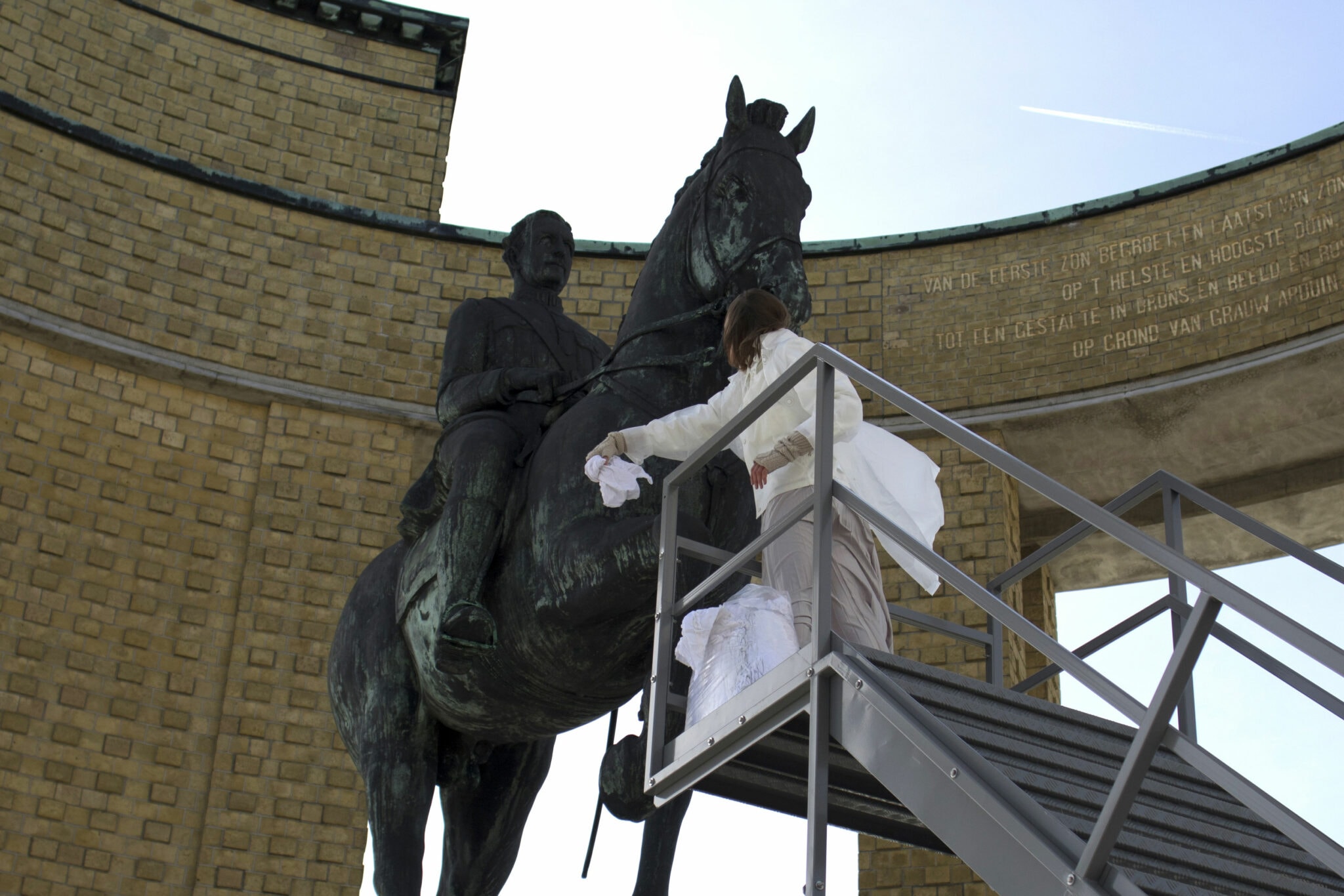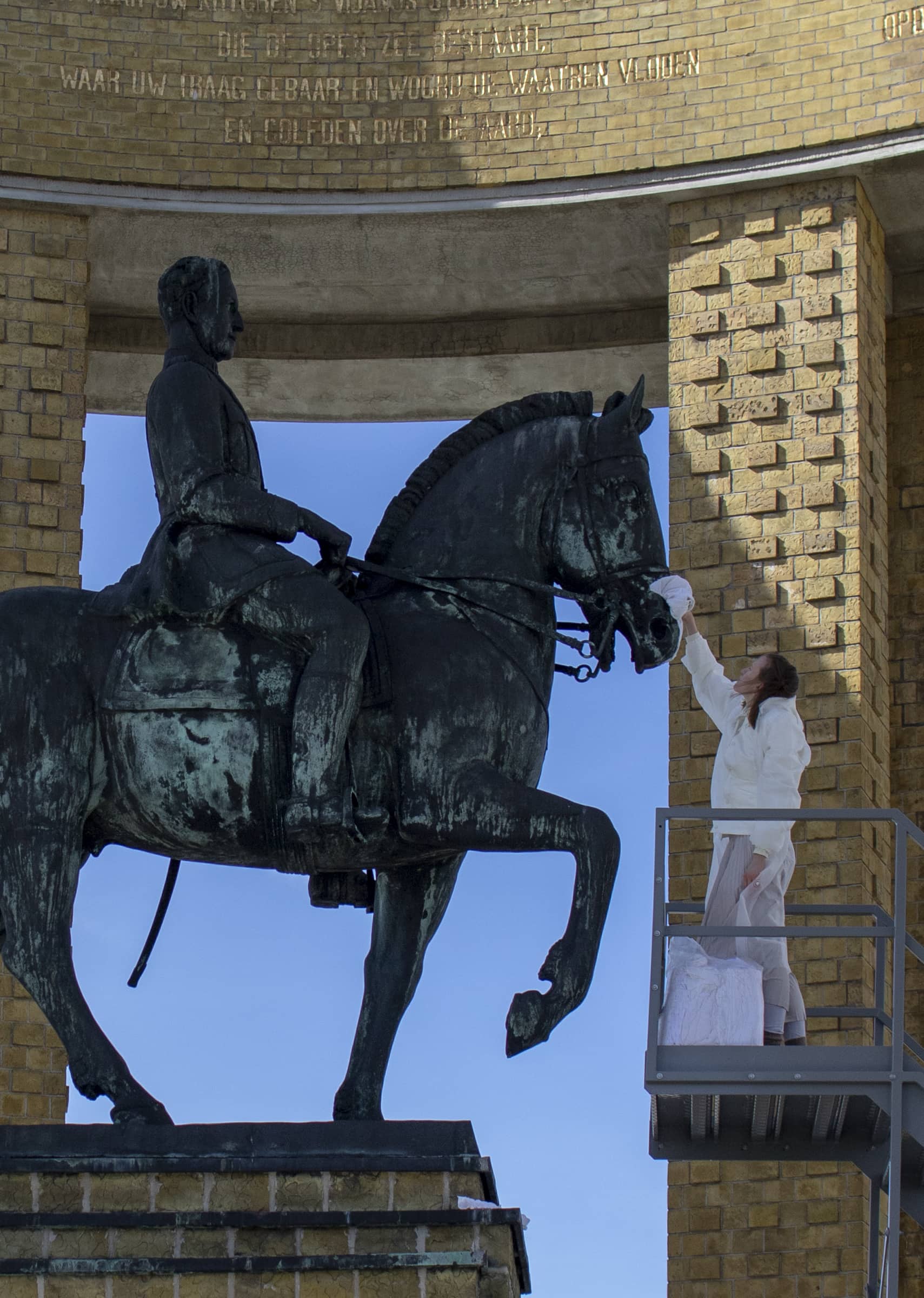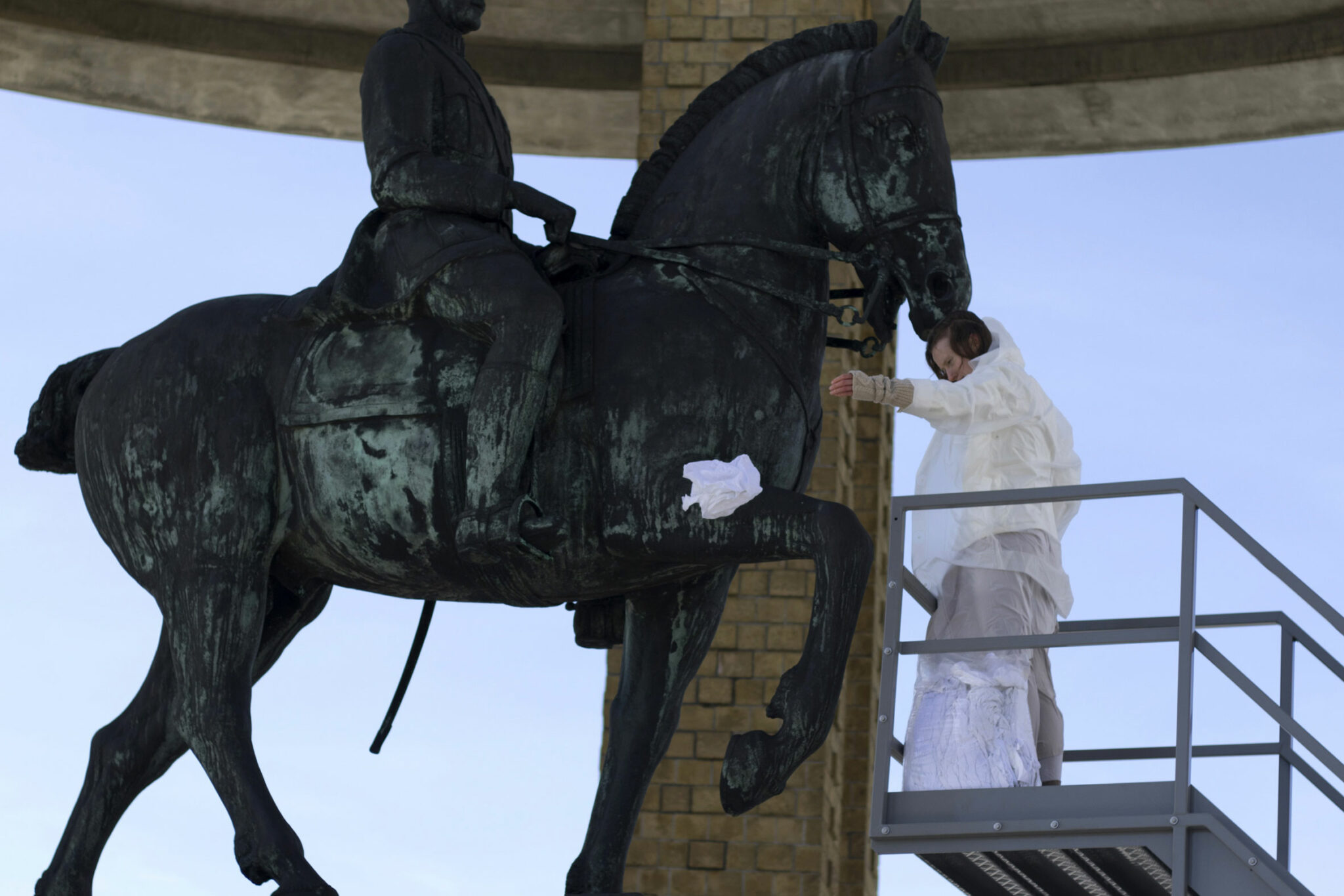In her work, Edith Dekyndt sheds light on the natural circuit of ecosystems at both micro- and macrolevels. The Ninth Wave is an homage to the serene Westfront monument to World War I. The sculpture stands at the sluice gate complex ‘De Ganzenpoot’, the crossroads between the North Sea and the Yser (IJzer) River and the spot where the Germans’ advance was halted. Thanks to that intervention, France was spared in World War I while Nieuwpoort itself was nearly completely destroyed.
This work by Dekyndt is a live performance, an action that is regularly repeated and is also available on video. It shows a woman cleaning the virile statue of Albert I at regular intervals, a reference to the impact of World War I on the lives of women. Though women did not fight on the front, they replaced the men in the factories and farms. After the war, many women decided no longer to fulfil the expectation that they would largely be stay-at-home mothers and bear many children, partly for fear that their children might die in a war. The title of the work is named for side two of a 1985 album by Kate Bush. The suite of songs on The Ninth Wave tells the story of a woman floating on her own on the sea and waiting to be saved. According to certain seafarer traditions, large waves always come in threes, and in series of threes. The ninth and final wave is the most devastating of them all. The title also refers to the succession of waves by which the flooding of the region in 1914 was carried out.
With the collaboration and prodcution of Beaufort event
Medium : A live action at the monument « Albert I » in Niewpoort, Belgium, removable steel staircase, white rags
Dimension : variable
Curator : Heidi Ballet




